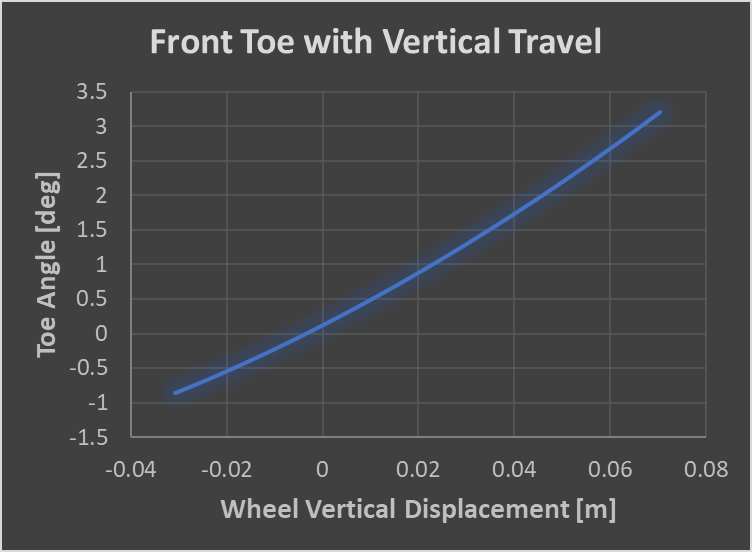Double Wishbone Kinematic Modelling
The Double Wishbone suspension is commonly known as the best performing suspension type in terms of camber compensation, for this reason it is common on racing cars and premium road cars. It is also known as SLA (Short Long Arm) suspension in reference to the difference in lateral length of the upper and lower wishbone. Why is it not found on all vehicles? Often due to cost and/or packaging constraints, especially in cases where the engine is transversely mounted. Understanding the fundamental geometry of the Double wishbone suspension is important for creating new or designing modifications for such suspension systems. Traditionally this involves creating expensive bespoke prototype components to create a physical assembly and understand the system. A much more cost effective solution is to simulate the system to get an understanding of the design before any physical components are created. This can reduce the number of iterations of physical prototypes that need to be made or even eliminate them completely.
Quarter Car Model
The video above demonstrates Lamerton Simulation Ltd's quarter car kinematic model of a standard Double Wishbone suspension. Of modular construction this model provides sufficient accuracy for basic kinematic analysis. Kinematic curves can be produced, for example camber and steer angle variation are plotted below against vertical wheel travel. These can be produced as well as standard geometric measures like King Pin Inclination (KPI), Caster Angle, Scrub Radius and Mechanical Trail. All can be calculated for various conditions.


Interested in getting a simulation for your suspension system?
Contact us by email at: info@lamertonsimulation.com
Standard Simulation Inputs
For a standard simulation the requirements are predominantly global locations in space (often referred to as hard points) for the following points:
- Top Mount
- Lower Control Arm(A-arm) Front and Rear mounts to Chassis
- Lower Ball Joint
- Track(Tie) Rod joint centres connecting to the steering rack and knuckle(upright)
- Wheel Geometric Centre (or wheel centre outside face plus rim/tyre width)
Standard Simulation Outputs
- Kingpin Inclination
- Caster Angle
- 3d image of kinematic assembly
- Plot of kinematic Steer (variation with vertical wheel travel)
- Plot of kinematic Camber (variation with vertical wheel travel)
Contact us by email at: info@lamertonsimulation.com
Who is this model suitable for?
This model is suitable for anyone looking to understand a Double Wishbone suspension system on a tight budget (e.g. low volume manufacturers, motorsport engineers, modders, students and automotive enthusiasts). This is significantly cheaper than the physical equivalent that can cost many thousands of pounds.
Want to run this model yourself?
This model is compatible with the OpenModelica simulation environment, contact us for further details.
And there's more...
This is just the tip of the iceberg in terms of the types of analysis that can be performed with this model, don't hesitate to contact us with any questions that you have. We are also developing equivalent models for other suspension types: Macpherson strut, RevoKnuckle, Super Strut as well as half car models with even more kinematic ability.
